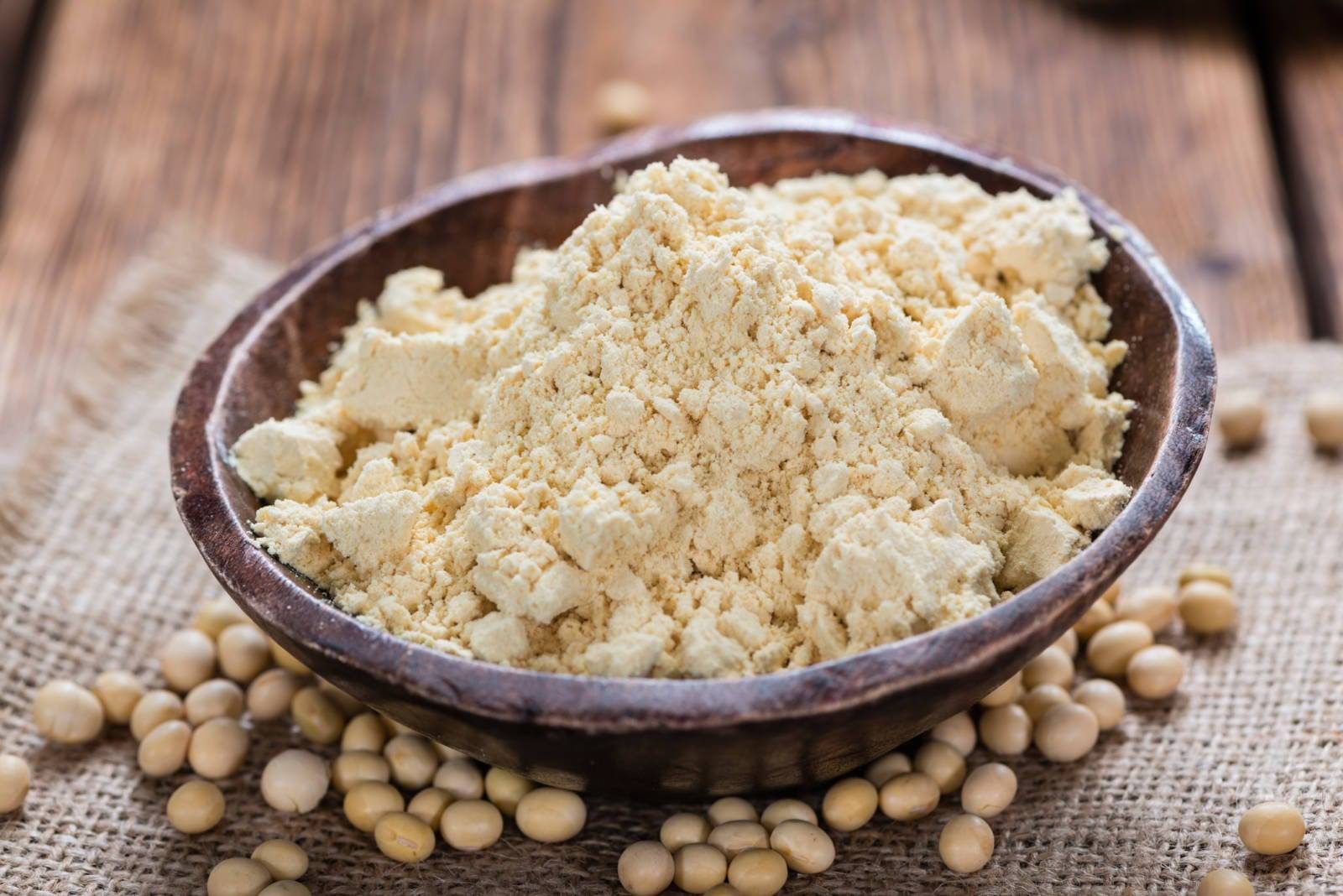Global consumption of soy extends beyond traditional food choices such as tempeh, tofu and soymilk. Soy ingredients also provide functional and nutrition benefits for various new and established food products around the world. Take a closer look at the ways that ingredients such as soy flour, soy concentrates, soy isolates and okara made with U.S.-grown soybeans enhance the world diet and inspire new specialties.
“The use of soy in snacks, sports nutrition, meats, soups and desserts is growing,” says A. Elizabeth Sloan, President of Sloan Trends. The Escondido, California-based firm tracks consumer food and beverage trends and behaviors, as well as health and nutrition attitudes, eating patterns, and emerging medical markets. The U.S. Soybean Export Council taps into Sloan’s expertise for an analysis of current trends creating a demand for U.S.-grown soybeans.
Globally, bakery and confections are the largest applications for new food, beverage and supplement product formulations with soy.[1]This article is Part One of a two-part report exploring the uses and advantages of soy ingredients.
How Soy Enhances Baking Industry Products
Soy is an economical ingredient with long-established uses in the baking industry. In fact, in the U.S. during World War II, soy flour was used it as a substitute for nonfat dry milk in recipes.[2]Today, soy flour offers both functional and nutrition benefits for baking. When wheat flour is fortified with defatted soy flour—usually at levels between 2 percent and 15 percent soy flour, depending on the baking application—the protein content of the finished product is boosted. Soy flour is approximately 50 percent protein, compared to wheat flour that varies from 9 percent to 12 percent protein. In doughnut making, adding soy flour to the mix reduces the fat absorption during frying and contributes to good crust color.[3]
Overall, the soy protein market is projected to grow from $5.1 billion in 2018 to $7.8 billion by 2027.[4] “The soy protein market is categorized into bakery and confectionary, functional foods, and other similar types of applications,” Sloan says. In addition to contributing to the nutrition content of baked goods by adding protein, adding soy flour offers other functional advantages. For example, when 2 percent up to 5 percent soy flour is added to a bread dough formula, the texture, crust color and crumb structure are improved. Soy flour also serves to increase water absorption so that breads don’t get stale as quickly.
Lesser-Known Soy Ingredients Earn Global Attention
Like other traditional soy ingredients making their way around the globe from Japan, okara (soybean pulp) is gaining momentum. Miso (the umami fermented soybean paste) and natto (a fermented soybean dish that combines high protein and probiotics) have both gathered fans outside of Asia. Okara is a traditional food in China, Indonesia and Korea as well as in Japan. It is the high protein, high fiber pulp that remains after liquid is drained off during the tofu-making process.
Because traditional okara is a perishable product containing 75-80 percent water, many tofu shops gave it out free or sell it inexpensively. Today, to capitalize on its health benefits including isoflavone and high fiber content, more tofu companies are investing in equipment to dry it inside their plants and extend its use. Dry okara is incorporated into sweet snacks and products like energy bars, cookies and muffins, as well as dumplings and burgers. Japanese home cooks add it to cookie dough and sprinkle okara powder into yogurt, soup and vegetable stir-fry dishes.
[1]Innova Market Insights, 2019, New Product Database, March.
[2]“What is Soy?” bakerpedia.com/ingredients/soy. January 4, 2019.
[3]Michaelides, D. “Soy: healthy and functional,” Bakers Journal. February 5, 2016.
[4]Innova Market Insights, 2019, New Product Database, March.
